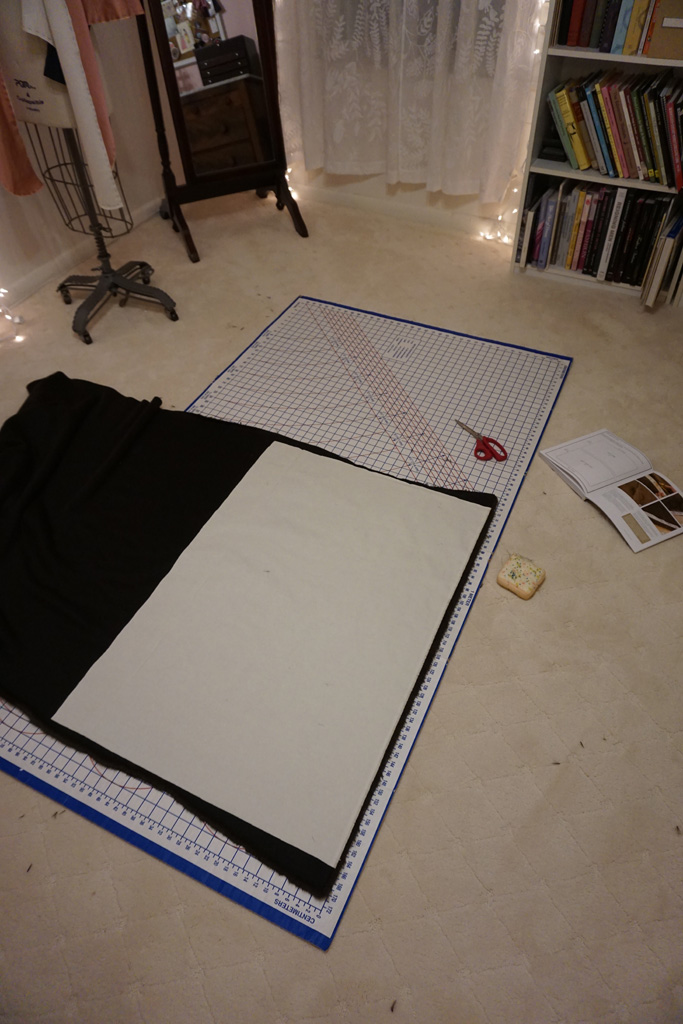June seems like the perfect time to tell you all about my latest winter accessory, right? When I made my fur trim satin mantle this past winter, I also made a matching oversized faux fur muff.
As I mentioned before, working with faux fur was a new experience for me. I had this project planned for months, but I was intimidated and spent a lot of time procrastinating and putting it off. I’ve made several muffs in the past but the faux fur was my stumbling block. Lucky for me the
American Duchess Guide to 18th Century Clothing arrived on my doorstep last November and what do you know, there was a faux fur muff project in the book! While I didn’t follow their method exactly, it was wonderful to have a starting point and something to reference as I was working on the project. I highly recommend the book, and not just for this project. There is a lot of great research and practical construction information in it. While I’m familiar with a lot of the projects in the book, I find it is useful to have another construction reference in my library. I’m a firm believer that there is always more to learn and another’s perspective on the same information can be invaluable!


The book suggests using a razor to cut just the fur backing to keep the pile intact. Unfortunately, this didn’t work for me. I think perhaps my razor was too dull (even though it was new) or the backing knit on my fur was too springy, but I couldn’t get a clean edge. The best method I found for the fabric was to use a small pair of sharp scissors to cut just the backing. I inserted the scissors just behind the backing, avoiding the fur, and used small snips to cut along the line I marked with chalk. It was just as tedious as it sounds, but it was worth it since it left a clean straight edge that made it easy to hide the seams.


After the muff body was cut, I attached twill tape to the sides and seamed the fur together by butting the edges together and sewing them with a whipstitch. My stuffing of choice was three layers of wool batting. I cut the batting slightly narrower than the fur, then folded the edge over the fur, approximately 2.5 inches on either side. I anchored the sides to the batting using large whipstitches through the edge of the twill tape. The lining was then laid over the wool with the seam allowanced turned under, and wrapped tightly around the muff. I then whipstitched the lining to the twill tape, being careful not to catch the fur. I choose a thick cotton flannel for extra snuggliness and added a slip pocket to inside for a hand warmer to keep me extra toasty.
Once I had gotten over my fear of faux fur, it was a quick and easy project. Working with the faux fur takes some practice and patience, but it was worth it! Now to wait another six months to use it.
Posted:
6/14/2018 11:27:11 AM by
Aubry | with
comments